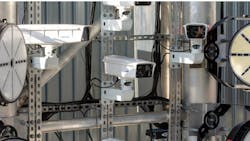There is no doubt that machine vision is expanding beyond its roots in industrial inspection. It’s a key enabler of autonomous driving and navigation, automated assembly, bin picking, and more.
Expansion into these newer types of applications bodes well for a robust industrial sector with plenty of opportunities for talented engineers. Indeed, Interact Analysis (Irthlingborough, UK), a research firm specializing in automation, expects machine vision revenues to grow by a CAGR of 6.4% between 2022 and 2028, increasing from $6.5 billion in 2022 to $9.3 billion in 2028.
Some of that growth will come from newer application areas; however, inspection will remain the prevailing source of use cases. Inspection accounted for more than 40% of revenues to machine vision vendors in 2022, and will represent nearly 42%, or $3.9 billion, in 2028, the firm predicts.
Why? Part of the reason is that engineers are applying machine vision to a wider variety of inspection tasks—thanks to advances in technology such as 3D imaging and deep learning.
One example is a ruggedized inspection system designed by Norfolk Southern Railway and Georgia Tech Research Institute. The system combines high-resolution cameras, stadium lights, and AI algorithms to capture and then analyze images of trains moving at up to 60 mph. To shield them from all types of weather, the components are installed trackside inside tunnel-type steel structures.
Related: Norfolk Southern's Machine Vision System Inspects Moving Rail Cars
AI-enabled algorithms analyze image data on-site to determine if defects are present. Within minutes, results are then transmitted to Norfolk Southern’s network operations center, where subject-matter experts review the data. Critical defects are flagged by the AI software for an immediate response.
In another example, Titan Cement automated inspection of cement sacks. The inline system identifies defects such as cracks, spills, dents, cuts, damaged edges, and printing errors. Damaged sacks or those with printing problems are removed by an automated deviation system without stopping the production line.
Related: Titan Cement Adds Inspection System to Production Facility
Those are just two examples. Expect Vision Systems Design to report on many more inspection projects in future months—and years.
About the Author
Linda Wilson
Editor in Chief
Linda Wilson joined the team at Vision Systems Design in 2022. She has more than 25 years of experience in B2B publishing and has written for numerous publications, including Modern Healthcare, InformationWeek, Computerworld, Health Data Management, and many others. Before joining VSD, she was the senior editor at Medical Laboratory Observer, a sister publication to VSD.

